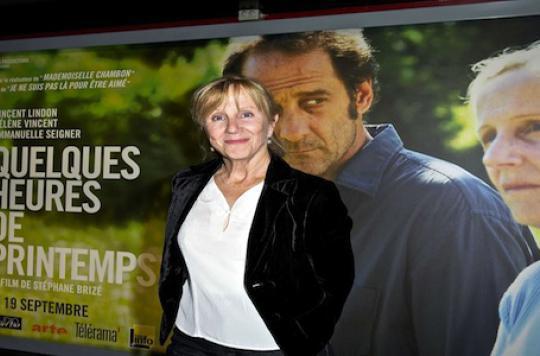Disability, cancer, euthanasia, the cinema stages disease. No more than yesterday, but the representation of these painful subjects in dark rooms has evolved.

End of life, cancer, AIDS, disability, so many health topics that are often heavy, but which nevertheless regularly occupy the big screens. A few weeks ago, the film A few hours of spring unveiled a Vincent Lindon at the heart of a drama with very current resonances, on the question of assisted suicide. In Untouchables, Omar Sy, the middle-aged suburban brother, was helping a paraplegic in search of genuine relationships.
Are there more fictions dealing with illness or disability in recent years? ” The answer is no. Since cinema has existed, health has always been a favorite subject for directors, following the example of theater and novels which, since antiquity, have put the caregiver, and especially the sick, on stage, explains Guy Lesoeur, health anthropologist and psychoanalyst. there are currently no more films with a medical connotation than in the 1950s, 1960s or 1970s. “
Listen to Emmanuel Ethis, sociologist of cinema: ” Films about the disease have been around since the early days of cinema. The only difference is that today all film-producing countries are interested in these subjects. “
If the number of productions has not really changed, the way in which these subjects are treated has changed considerably over the decades. Today, “medicine fiction” flirts more and more frequently with documentaries, observe specialists in the 7th art. Gone is the image of the doctor who played the emblematic role. The “good doctor” has come down from his pedestal; he exercises a profession like any other and can also be touched by illness, anguish or love. Often, he shares the screen with a caregiver, a home help or even a caregiver.
Listen to Guy Lesoeur, health anthropologist and psychoanalyst : “Today in the cinema, the doctor or the nurse shared his role of caregiver with the home help. For example, in the film Untouchable, Omar Sy becomes the hero, there is no more medicine, while the whole film is centered on disability ”
Witness of our time, cinema does not escape this highlighting. But fictional directors also choose illness because it gives a story a melodramatic spring. Even if “medicine fiction” often has an educational mission. In this case, it allows the spectator to project himself and imagine what awaits him if he falls ill.
Listen to Emmanuel Ethis : ” We are very curious to know how we could be taken care of as an individual. Fiction helps to know everything that is impossible to know when you are patient. There is social anxiety, to which fiction responds.
If it accompanies the movements of society, the cinema can also help to change the representation of the disease. AIDS is undoubtedly the best illustration of this. At first, films, like society, evoked it without really talking about it. The name was barely spoken. Feature films like wild nights released in 1992 or even Philadelphia in 1993, helped to demystify it by showing the sick and their suffering to talk about the disease. But beware, the specialists are clear, ie cinema must remain cinema. On sensitive subjects, fictions should not, according to them, influence opinion.
Listen to Guy Lesoeur : “Regarding euthanasia or assisted suicide, we must be careful with the cinema, that the spectators keep their reason. “
The health subjects brought to the screen, too, are giving way to fashion. AIDS is no longer successful, as is tuberculosis. Since Marguerite Gautier’s novel in 1936 or the foam of days in 1968, the portrayal of tuberculosis disappeared from movie posters. Advances in medicine in this area have made this pathology less present in our Western societies, yet in 2010, 8.8 million people developed tuberculosis and 1.4 million died from it according to the WHO.
Listen to Guy Lesoeur: “Disability is quite fashionable, and then transplant too… In the future, we will also see films on prostheses. We will not be able to see robots, but men in whom certain organs have been replaced which will play a role and it will almost become a habit. “
And in the future? According to professionals, it is the field of psychiatric illnesses that could be explored. It is not so much that pathologies like paranoia or schizophrenia are unknown to the public, but the spectators are not always aware that these psychological disorders are really diseases. Movies like Flight below a cuckoo’s nest released in 1975 have certainly already been made, but for Guy Lesoeur, there is still a deposit of films to be made in this area, to shed light, while avoiding the sensationalism of certain thrillers.
.















